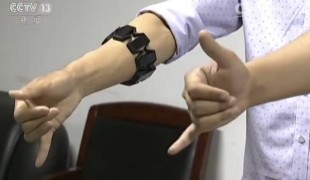- 2944
- 166
- 2
- 4
- 0
- Help Ukraine
About the solution
During his visit to these remote villages, the student realised that the technology was, in fact, marginalising users who didn’t have access to it. As he said, “technology is making them even more disabled”.
The adaptive technology available in India for blind people was not the best for them, as regional dialects and accents can make the English-language artificial voice difficult for a lot of people to understand. Also, this means a lack of privacy for the user as text messages and emails are read aloud by the automated voice.
So he came up with the Braille smartphone, a device that has the same feature as the regular smartphones. He started working on two prototypes: the first generation phone and the Braille smartphone.
The first generation phone works by displaying 10 Braille characters at a time and has a music player, e-mail client, calendar and GPS navigation.
The Braille smartphone will allow users to communicate more easily and in a more private way. It will also feature a sensor to inform the user about the distance of different objects (it will also be able to generate a map which users can follow when they want to go somewhere), scan the colour of objects in front of them, and include a camera that will translate text to Braille, allowing the user to view a face using their touch. Like traditional smartphones, this device will have a touch-responsive screen.
The display screen and Braille characters will be possible because of Shape Memory Alloy Technology. This systems works due to the expansion of metals when heated, which then contract back to their original shape. This device will have a grid of pins that will feature this technology. These raised pins formulate the Braille characters, and on the smartphone’s high-resolution screen will convey other touchable patterns such as shapes, figures and maps.
Sumit founded his own company - Kriyate Design Solutions - in 2012, and has the goal of keeping both of these gadgets affordable.
Adapted from: https://bit.ly/2dZzIyq
More info: https://dagar.me/
https://www.youtube.com/watch?v=xW46W2pV_r8
This solution shall not include mention to the use of drugs, chemicals or biologicals (including food); invasive devices; offensive, commercial or inherently dangerous content. This solution was not medically validated. Proceed with caution! If you have any doubts, please consult with a health professional.
DISCLAIMER: This story was written by someone who is not the author of the solution, therefore please be advised that, although it was written with the utmost respect for the innovation and the innovator, there can be some incorrect statements. If you find any errors please contact the patient Innovation team via info@patient-innovation.com
-
-
215
-
0
-
2732

Using AI to allow blind people to find familiar faces
COMMUNICATION: Communicating, whether by speaking, listening, or other means
Social interaction
Blindness
5 Senses support devices: (glasses, hearing aids, headphones...)
Body-Worn solutions (Clothing, accessories, shoes, sensors...)
App (Including when connected with wearable)
AI algorithm
Assistive Daily Life Device (to help ADL)
Difficulty communicating with environment
Confusion
Regaining sensory function
Promoting self-management
Promoting inclusivity and social integration
Improving Speech and Communication
Raise awareness
Ophthalmology
Pediatrics
United States
-
-
-
552
-
0
-
9345

Girls create translation armband for the deaf
COMMUNICATION: Communicating, whether by speaking, listening, or other means
Social interaction
Congenital Deafness
Hearing Disorders
Ear and Labyrinth Disorders
5 Senses support devices: (glasses, hearing aids, headphones...)
Assistive Daily Life Device (to help ADL)
Body-Worn solutions (Clothing, accessories, shoes, sensors...)
Hearing loss or ringing in the ears (tinnitus)
Managing Neurological Disorders
Promoting inclusivity and social integration
Improving Speech and Communication
General and Family Medicine
Neurology
Otorhinolaryngology
China
-
-
-
441
-
0
-
8276

Cane helps blind people recognize faces
COMMUNICATION: Communicating, whether by speaking, listening, or other means
WALKING WITH A WALKING AID: Walking with a walking aid
Urban exploration
Traveling
Social interaction
Blindness
Assistive Daily Life Device (to help ADL)
Walking Aid (wheelchair/walker/crutches)
Vision problems
Sensitivity to light or sound
Restoring mobility
Promoting self-management
Managing Neurological Disorders
Promoting inclusivity and social integration
Maintaining Balance and Mobility
Improving Speech and Communication
Preventing (Vaccination, Protection, Falls, Research/Mapping)
Neurology
Ophthalmology
United Kingdom
-
 en
en